What are Plum Tomatoes?
Plum tomatoes are classic ingredients that chefs use for making tomato paste, sauces, and juice. Did you know that you can use plum tomato substitute to make your favorite sauces or stew whenever you don’t have plum tomatoes?
There are so many plum tomato substitutes to save your recipe. Keep reading the article to learn more about the different substitutes for plum tomatoes.
Substitutes for Plum Tomatoes in Recipes
What are plum tomatoes used to make in Italian kitchens? Plum tomatoes are so popular for producing red tomato sauces and delicious dishes because of their low water content.
Nevertheless, there are a few options that you can use in case you don’t have plum tomatoes. Keep on scrolling to find out the best substitute for plum tomatoes.
Beefsteak Tomatoes
Beefsteak tomato is substantial and keeps its shape nicely when sliced. It is excellent for plum tomatoes substitute if you come across it.
Because of its sturdy structure and rich flavor, you can use beefsteak tomatoes in making salads and burgers. The beauty in beefsteak tomatoes lies in their water content, making them work well for sauces.
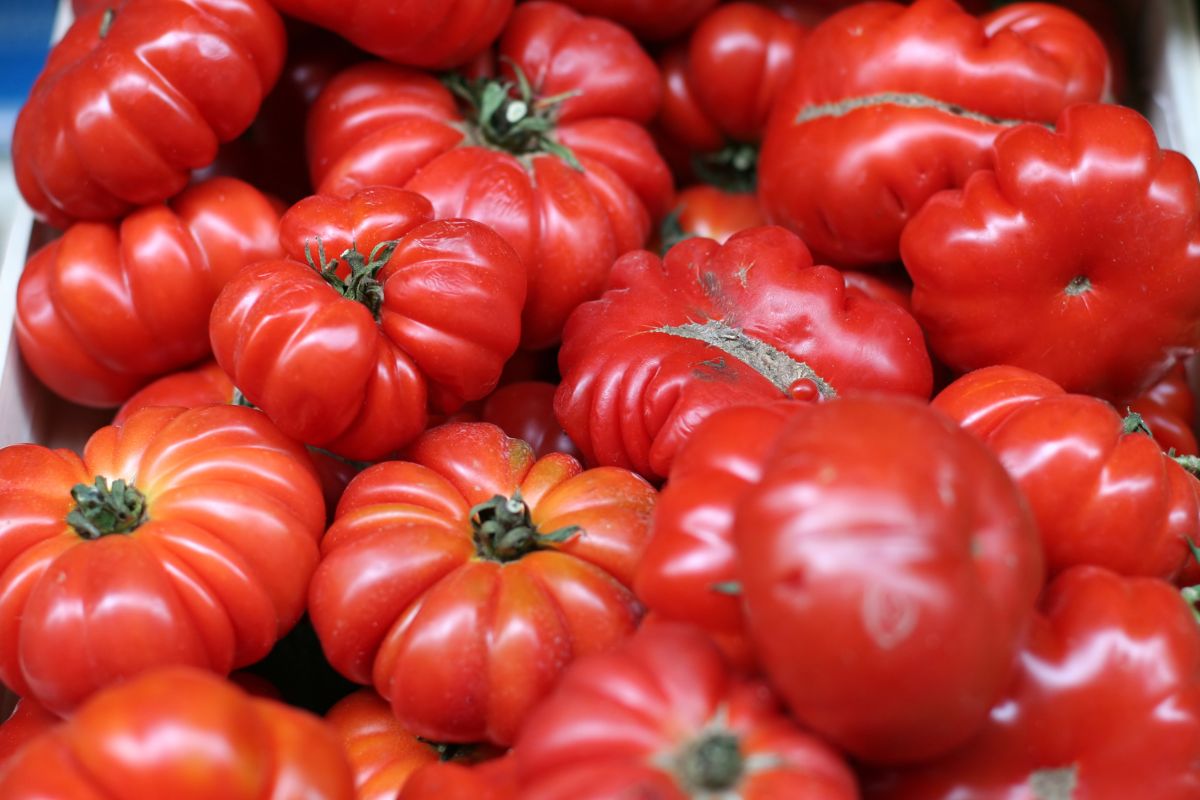
Canned Tomatoes
Are you looking for the best alternative for plum tomatoes in your kitchen? Worry less because canned tomatoes are the best substitute that you should consider for cooking. They are suitable for making tomato sauce but not for salads.
Canned tomatoes are a pantry essential, and you can easily get them in supermarkets. Make sure to use around one and a half cups of canned tomatoes for every pound of fresh tomatoes; this helps to retain your sauces or stew texture and the best flavor. Canned tomatoes work perfectly in place of all fresh tomatoes.
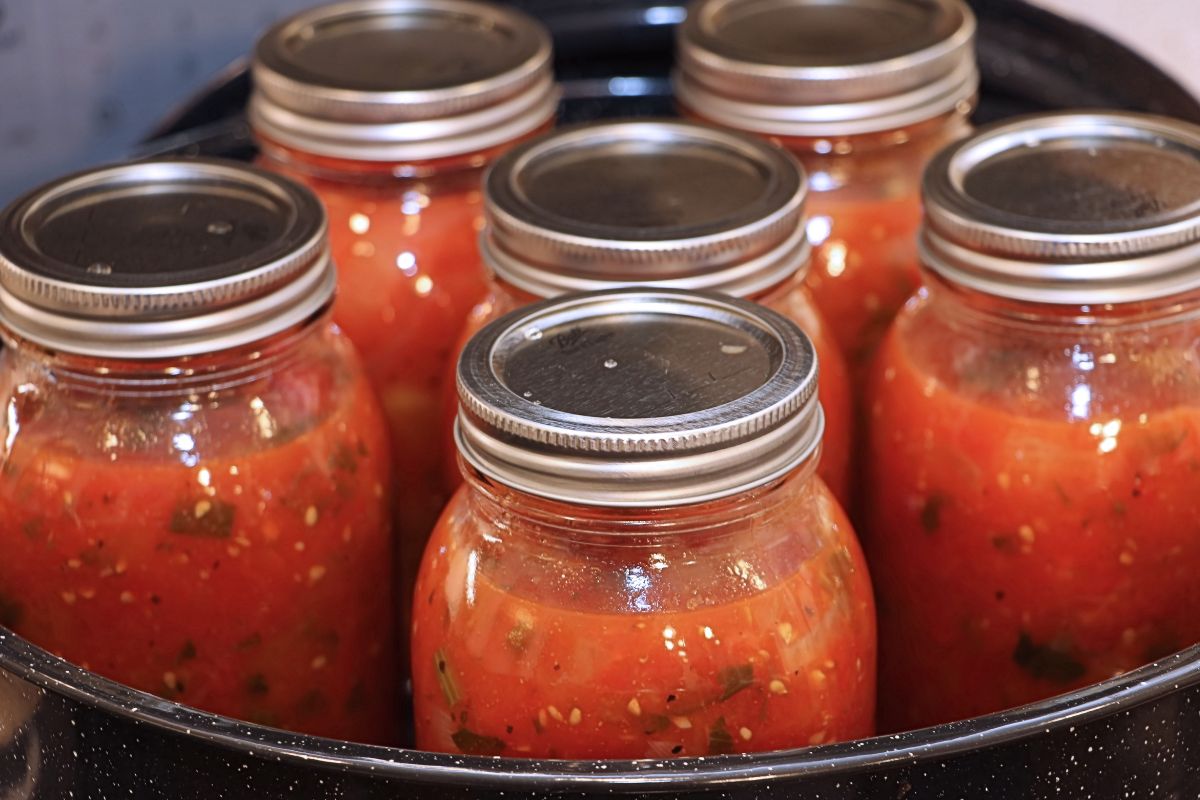
Cherry Tomatoes
The cherry tomatoes are a type of small round tomato that has undergone some genetic mixing between domesticated garden tomatoes and wild tomatoes of the current kind. Cherry tomatoes can be spherical or slightly oval and range in size from a thumb tip to a golf ball.
Furthermore, cherry tomatoes are the same in size as some plum tomatoes; therefore, they can be substituted in both cooked and raw recipes making them suitable for making salad dressings and sauces.
Cherry tomatoes also contain more seeds than plum tomatoes; therefore, removing them before you include them in sauces would be a good idea. Cherry tomatoes are a little more watery, so you might need to add more tomato paste to make them thicker.
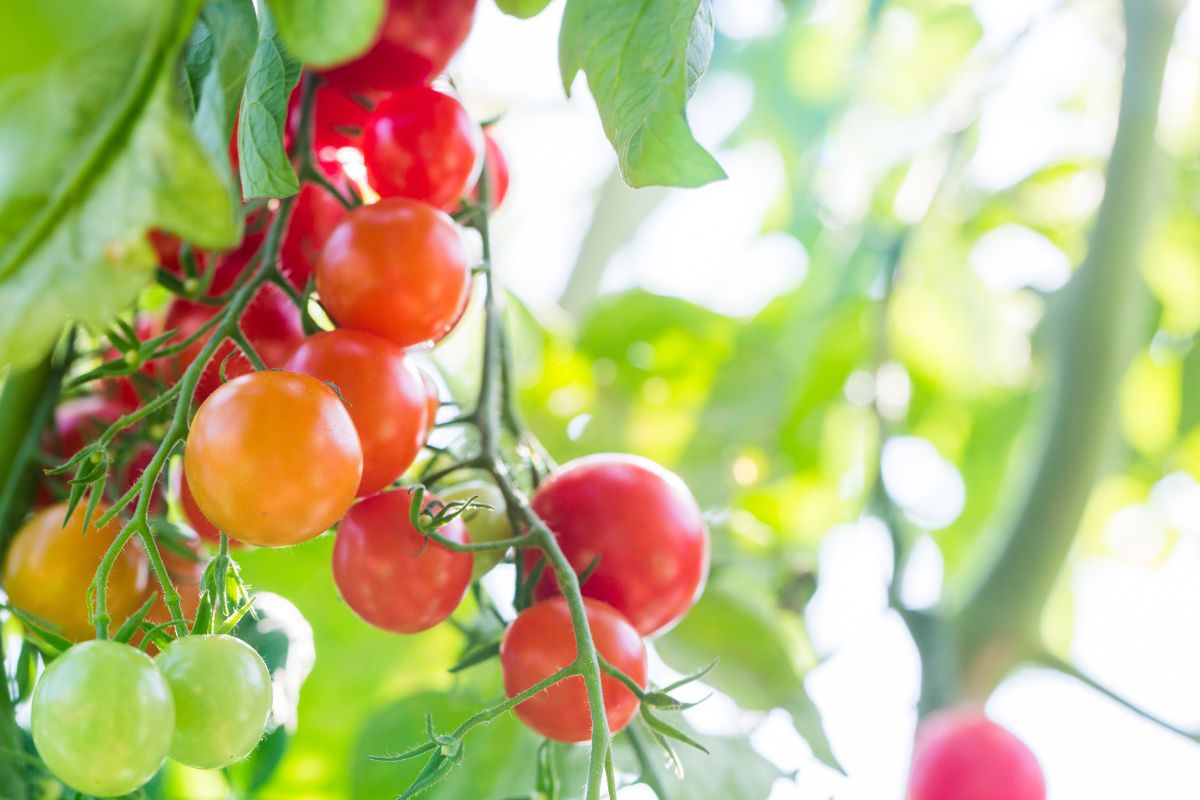
Grape Tomatoes
Grape tomatoes resemble oval plum tomatoes but are usually sweeter than cherry tomatoes. Grape tomatoes originated in southern Asia. The Grape tomatoes produce small fruits that are typically tiny and oval.
Since the introduction of grape tomatoes in the world market in the 1990s, they have gained substantial popularity, at least partly due to their larger sugar content than regular tomatoes due to their compact, bite-sized shape.
On top of that, grape tomatoes don’t contain much water, making them a good substitute for plum tomatoes.
Grape tomatoes have a great flavor profile and work well in making stews, sauces, and even salads, although you may need to purchase a lot more grape tomatoes because of their small size. Grape tomatoes can be prepared the same way as plum tomatoes, and add them to your salad or dish.
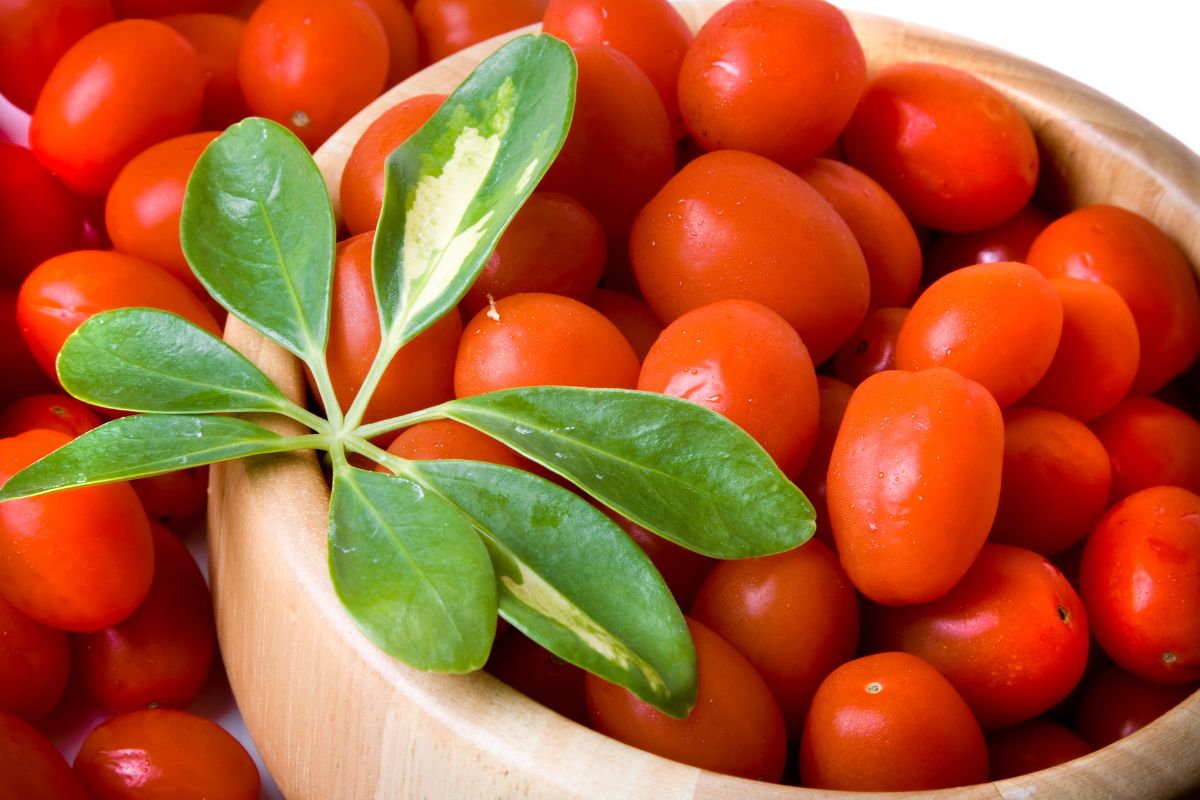
Heirloom Tomatoes
The Heirloom tomatoes are open-pollinated, non-hybrid heirloom cultivars of tomato. They are commonly popular in the United Kingdom as heritage tomatoes. They are resistant to diseases and have a shorter shelf life.
If you are one of the people who love cooking, heirloom tomatoes should be your alternative ingredient in your kitchen whenever you don’t have plum tomatoes. You can get them at the farmers’ market or your grocery store.
Different types of heirloom tomatoes are available depending on the season. These tomatoes look good on salads and come in different colors, including yellow, green, and red.
The heirloom tomatoes have a sweet and deep taste compared to regular tomatoes. When boiled, they produce a rich flavor. This type of tomato can be cooked just like plum tomatoes and will deliver similar results in your recipes.
Peppers
At times it’s just hard to get your hands off on plum tomatoes when making sauces or salads. Don’t worry if you realize you are out of plum tomatoes and may be out of season, or they are not in the grocery store, don’t worry because this is where peppers come in as a substitute. Keep on reading this article to find out.
When you decide to use the peppers as a substitute for plum tomatoes, of course, you will not get tomato sauce, but you can still get a delicious sweet sauce that you use on your meat and pasta if you use the red bell peppers and roast them before adding them to your sauce. In addition to that, the peppers have a nice crunch and go well with salads.
Regular Tomatoes
There are circumstances where plum tomatoes become a little challenging to find, even in some supermarkets. If you experience this challenge, don’t panic. Regular tomatoes can be a good substitute because they are always accessible easily year-round, unlike plum tomatoes.
It is important to note that regular tomatoes are an added advantage because of their use in making salads, recipes, and fresh meals.
Also, remember that regular tomatoes have more seeds and contain more water. You might need to use less or add more tomato sauce to ensure an appropriate texture. Before putting the tomatoes in your skillet or pot, remove some of the seeds.
San Marzano Tomatoes
San Marzano tomatoes are a variety of Italian plum tomatoes with an extended rectangular shape. They contain fewer seeds, less water, fewer seed pockets, and thick inner walls and are bright red, firm, fleshy, low-acid, sweet, and have a strong tomato flavor.
The San Marzano tomatoes are common in most Italian kitchens. Their fleshy texture makes it easy to make thick and tasty sauces. Sometimes plum tomatoes can be overwhelming to find plum tomatoes, so it is important to consider using the San Marzano tomatoes as a substitute to save time.
Sun-Dried Tomatoes
The term “sun-dried tomatoes” refers to tomatoes that have dried out in the sun, a dehydrator, or an oven. The tomatoes lose up to 90% of their weight when they are dried because they lose their water content, which causes them to shrink.
The sun-dried tomatoes are a chewy, acidic, sweet garnish for salads and spaghetti. They have a great flavor, making them the best substitute for plum tomatoes.
Typically, you can find sun-dried tomatoes, but you can also buy them fully dried in the supermarket’s spice department, which lasts for a long period in the pantry.
Sun-dried tomatoes are very useful in the kitchen because you can use them in any cooked recipe, including sauces and stews, after reconstituting them in hot water for approximately one minute.
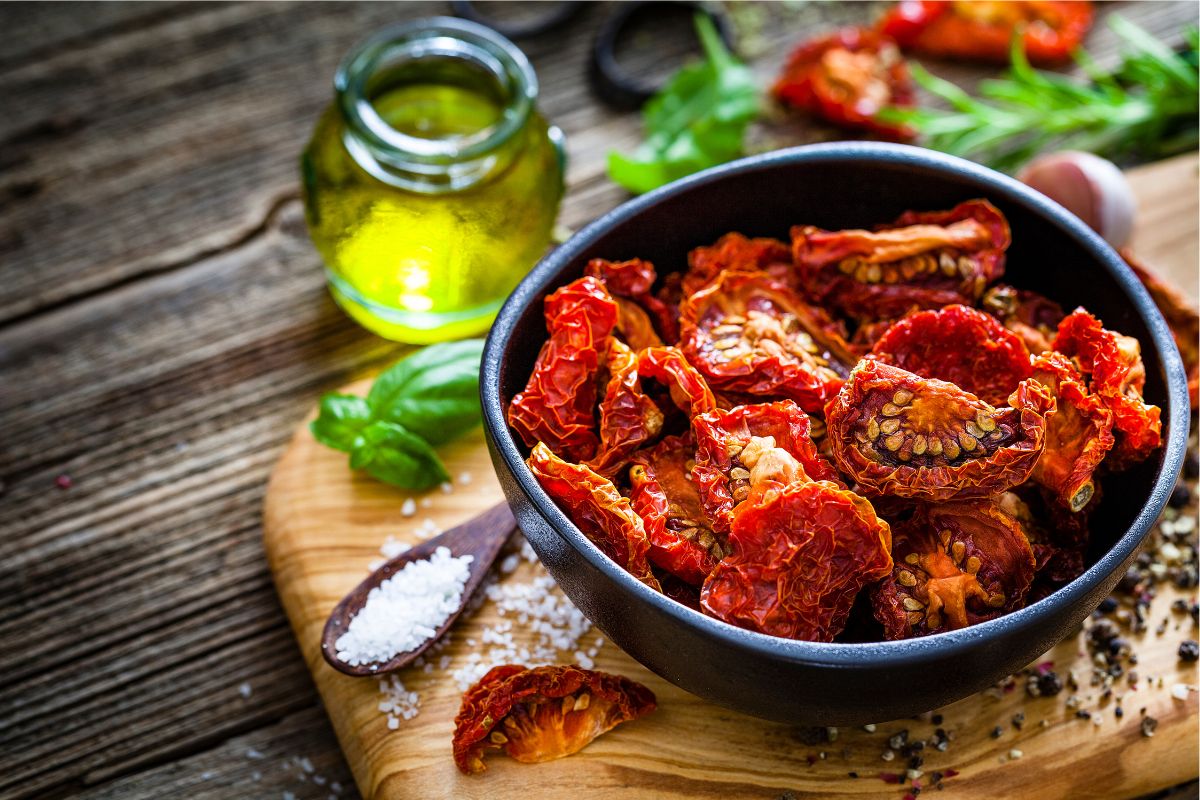
Tomato Paste
If you can’t get plum tomatoes, tomato paste is a good substitute because it is thick and tasty, much like plum tomatoes. After making a tomato paste, the result will have a good consistency and flavor.
Additionally, you will need a few teaspoons to make up the difference, but also, it’s better to add a bit at a time and gauge how much you need since each recipe may vary. It is important, too, to remember that tomato paste cannot be a substitute for salads.
How to Prepare Tomato Paste
There is a big difference between homemade tomato paste and the other ones you buy in the supermarket. Homemade tomato paste is more delicious compared to the supermarket ones.
While at home, you can prepare enough tomato paste in a day which will last you through several cooking tasks. Homemade is always worth the effort.
The Cooking Ingredients
To make the best tomato paste, you will need several ingredients. The following is a list of the main ingredients:
- 2 tablespoons of bottled lemon juice or 1/2 teaspoon of citric acid
- 2 tablespoons of oil
- 2 tablespoons of sea salt
- 10 pounds (4.5 kilograms) of tomatoes
The Cooking Equipment
- A large pot
- Knife
- Chopping board
- Chinois, sieve, food mill
- Four jars for storing
- One roasting pan or two rimmed baking sheets
Directions
- The first step is to preheat the oven to 350 degrees Fahrenheit (176.6 degrees Celsius) and then position the two racks well to divide the range into thirds.
- Cut the tomatoes and make sure the slices are in quarters.
- In this step, simmer the tomatoes in olive oil together and pass over medium-high heat. Place the olive oil in a large pot and stir until they shimmer. Add your tomatoes and cook until soft and the peels separate from the tomato flesh.
- To separate the tomato pulp from seeds and skins, push the hot tomatoes through a food mill, sieve, or chinois. Combine the pulp with sea salt and lemon juice. Toss the seeds and skins in the compost or trash.
- Put the pulp on the two baking sheets. Make sure to divide the tomato pulp between 2 large, rimmed baking sheets. A large roasting pan will take a long time to cook.
- Bake the tomato pulp until it becomes a paste. Put the baking sheets in the oven, then, after every 30 minutes, check on the tomatoes as you stir the paste and rotate the baking sheets to ensure the reduction evenly. The paste will gradually reduce until it no longer fills the baking sheet. Combine the contents of the two baking sheets.
- Bake until the reduction is greater than half. While baking, periods will vary depending on how juicy your tomatoes are. The paste will be ready when it turns glossy,brick-colored, and reduced to more than half, which takes around 3 to 4 hours. They shouldn’t contain any more water or moisture at this stage.
- Fill the jars with the paste. After dividing the paste into four pots, leave a ¾- inch headspace.
- Option 1 for preservative processing involves heating tomato paste. Apply lids and rings, then process in a pot of boiling water for 15 minutes. Keep it in a cool, dark place for up to one year. Keep it chilled in a refrigerator for up to one week after opening.
- Option 2 for preservation involves freezing. Froze the paste if you don’t want to process it. Scrub the paste into tidy-half-quarter-pint jars. Place the layer of olive oil on top of each jar before putting it into the freezer. It can stay very long as long as you use a clean spoon when taking it out.
FAQs on Plum Tomatoes
Are Roma Tomatoes and Plum Tomatoes the Same?
Sometimes spotting the difference between Roma and Plum tomatoes can be challenging when you enter a supermarket or a grocery store to purchase them. Well, here are the details about the two tomatoes. Keep scrolling to learn if they are the same or not.
Roma tomatoes are good for making sauces because of their rich flavor and low water content. They are good at making sauces because they are seedless compared to other tomatoes and another name for Roma tomatoes is plum tomatoes.
On the other hand, Plum tomato is just an umbrella term for the many types of tomatoes, including Roma tomatoes. This kind of tomato is fairly common in supermarkets.
What is the Difference Between Plum Tomatoes and Regular Tomatoes?
In case you find yourself in a position of not being able to differentiate between plum and regular tomatoes, here is the difference. Regular and plum tomatoes differ from each other in that plum tomatoes contain less water.
Plum tomatoes also don’t have many seeds, making them ideal for preparing delicious sauces for pasta or meat. In addition to that, plum tomatoes tend to produce a tastier dish than regular tomatoes because of their deeper and rich flavor.
The rich flavor of plum tomatoes makes many chefs use them in their dishes compared to regular tomatoes.
Can I Use Chopped Tomatoes Instead of the Plum Variety?
When you get into a supermarket, chopped tomatoes are readily available. Considering how tasty they are, you can decide to use them in place of Plum tomatoes. You can only use them when cooking foods like stews and sauces but not salads.
However, one thing to be cautious about chopped tomatoes is that they contain more water. To maintain a thicker consistency in your meal, you might need to use fewer tomatoes or add a tomato paste.
Recap
With all the details from this article, you can choose the best substitute for plum tomatoes from the list to suit your recipes. You can also make your tomato paste at home from the recipe.

Community of passionate writers and content creators who share a love for Italian heritage, culture, travel, food, and the Italian-American community. Our mission is to celebrate Italy’s rich history and traditions and connect with others who share the same passion.

